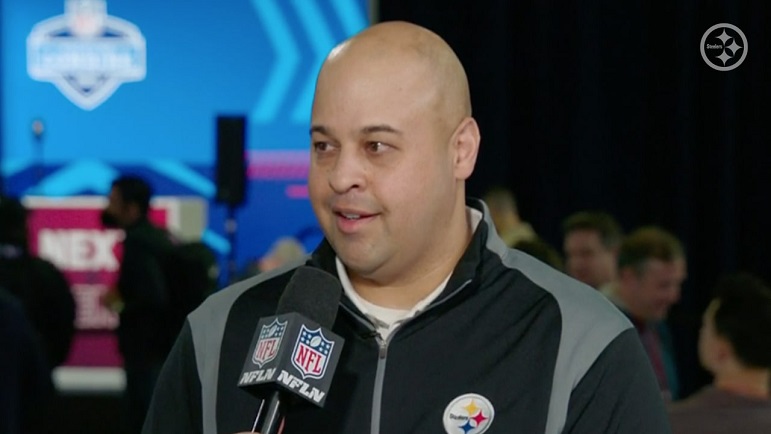While by no means unique, the Pittsburgh Steelers have a particular tendency of valuing in free agency players that they might have had a particular affinity for during the pre-draft process but didn’t end up selecting themselves. Examples would be numerous to list, but it continues to run through the 2023 offseason.
So what exactly is the logic behind it, given that there can be four or more years separating the draft and where the player might now be in his career? An example would be new inside linebacker Elandon Roberts, now 29 years old.
“Instincts, yes. I would say not necessarily our college grades, but we keep all our information”, Steelers general manager Omar Khan said earlier this offseason, prior to free agency, on Movin’ the Chains with Jim Miller and Pat Kirwan on SiriusXM Radio. “When there’s a player you really covet or you like and you don’t acquire that player and there’s an opportunity down the road, you just never forget”.
Roberts is, again, just one example, and it’s something he talked about since signing. He recalls having had a great meeting with head coach Mike Tomlin back during his Pro Day out of Houston, and he told reporters, “I’ve always said to myself, my wife, if I had the opportunity, it would be hard to pull me from that one”. He noted that “It took seven years”, but it finally happened after coming out of Houston in 2016.
Cornerback Patrick Peterson would be another example who actually goes back much further. The Steelers were never going to be in a position to draft him, but the two parties were rather familiar with each other.
It started with family ties, as it often is with the Steelers, as his cousin, cornerback Bryant McFadden, was on the team. Peterson has spoken since signing about training with Tom Shaw and working out with the likes of Ike Taylor and William Gay when he was still in high school.
You never want to unjustifiably bias yourself toward a player because you liked him a lot at one point, and I’m sure the Steelers have fallen into this trap a time or two. At the same time, it’s a valuable predictive tool to help you guess who will fit into the organization.
And as Khan said, the Steelers don’t simply go back to their college evaluations on players, even if it might be a starting point. Most players in question will have had a four-plus-year body of work at the professional level from which to judge.
Realistically, there probably aren’t all that many players the Steelers will not at some point have formed some type of relationship to, no matter how distant. There are only a few hundred players who declare for the draft every year, and teams can get to know players in the years before they come out. It’s almost harder, especially for a team like Pittsburgh, not to form such relationships.








